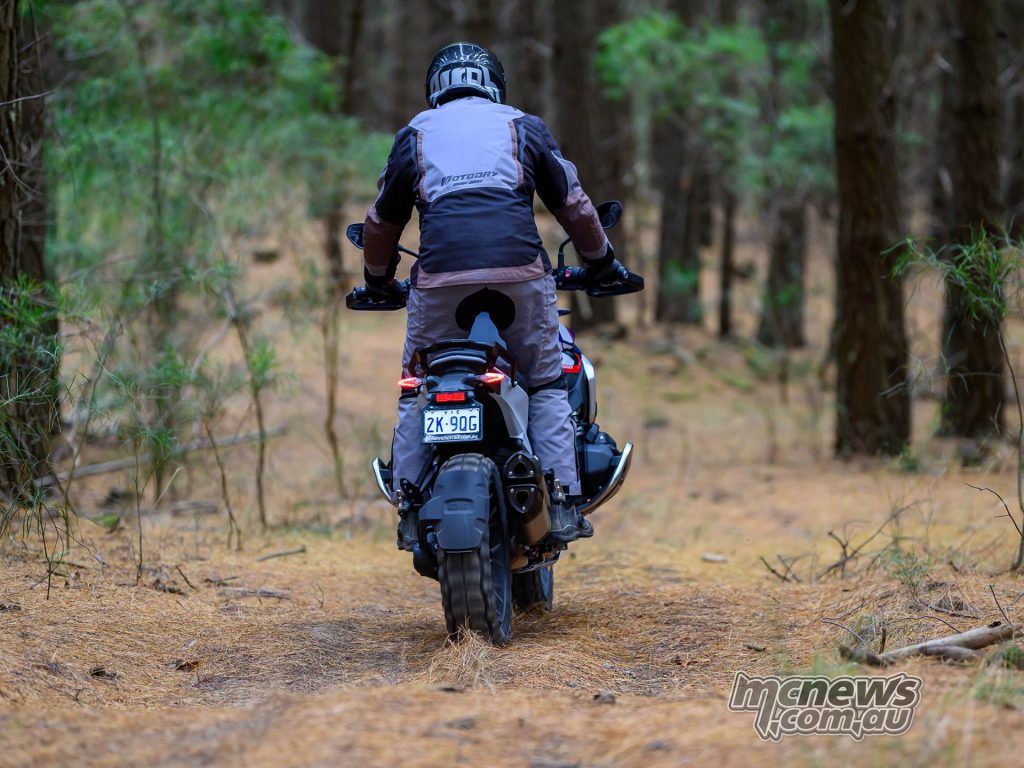BMW R1300GS Trophy X Review
Test by Wayne Vickers – Images RbMotoLens
There is no denying that the new ‘GS’ is a big deal. In almost every way. It’s a big deal for BMW, being a near top-down overhaul of their hero model Adventure bike. Perhaps it was needed, because the competition had been circling the GS, and taking bites at it from various angles. So it was time to take a stand.
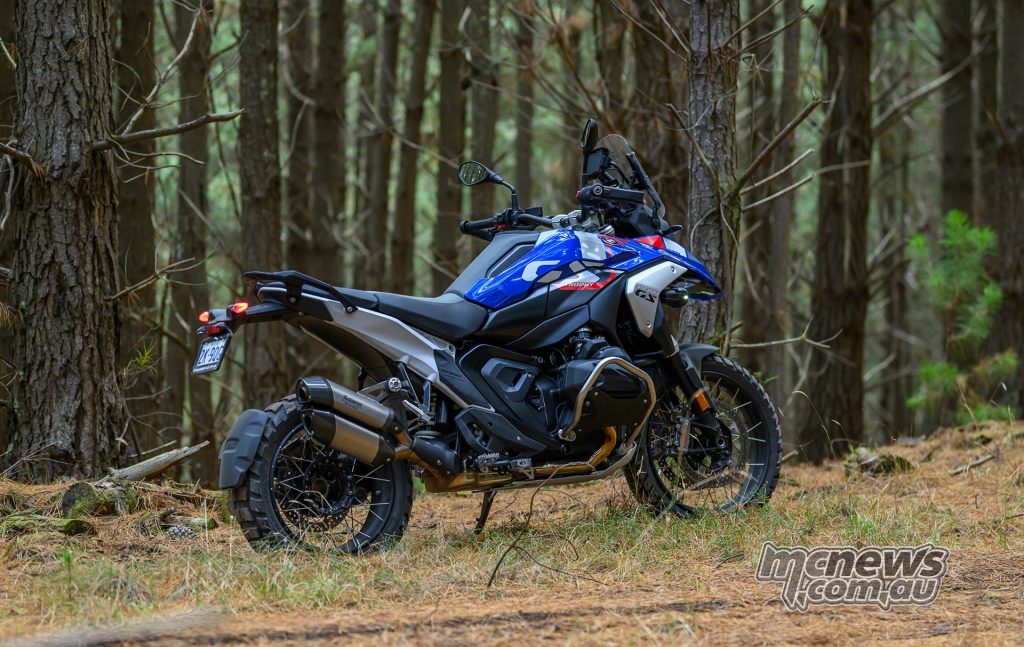
Whether they’re BMW fans or not, it’s also a big deal for riders. The successes and failures of this bike will influence future models from other manufacturers, just as past GS models have done over the years.
So yes, it’s a big deal all around.
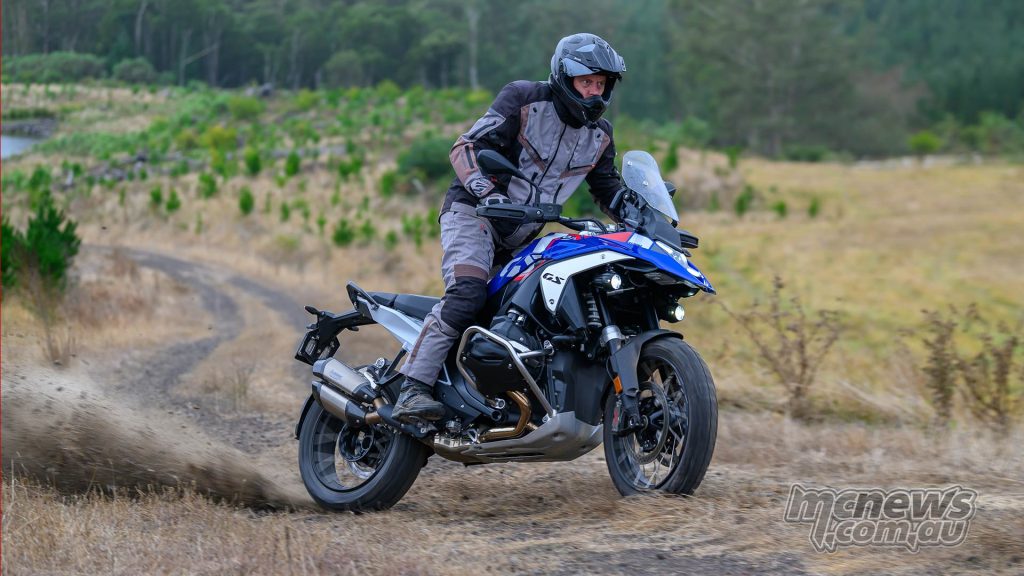
It’s also a big deal in just what it represents as a riding proposition. By that, I mean just how potent and capable this bike can be. I rode the ‘Pure’ version of the GS a couple of weeks ago, but in Trophy X guise, it seems even more potent. Yes, there are more powerful Adventure bikes out there, but the GS is the Alpha male when it comes to grunt. That 149 Nm of torque is an absolutely ludicrous amount. And with a taller 890 mm seat height, it feels (and is) a more focused and potentially unwieldy thing.
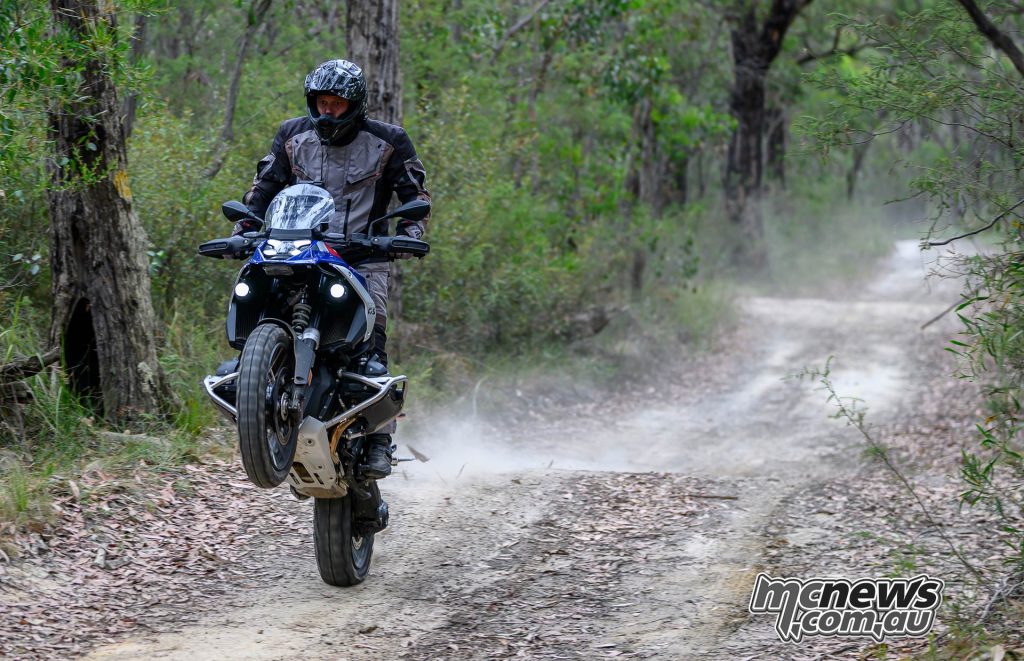
If you’re reading this, chances are you know the bulk of the redesign highlights:
- A 12-kilo drop in weight is probably the single biggest point that grabs my attention. Down to a kerb-weight of 237 kg (for the base model as far as I can tell). Add crash bars and all the Trophy X add-on’s onto that weight.
- A completely redesigned chassis that uses the engine as a stressed member.
- A new lighter, more powerful engine, that’s been bumped up in capacity to 1300cc, and with a very much redesigned gearbox that now sits beneath the engine, instead of behind it. It’s 6.5 kg lighter than the outgoing drivetrain, and power is now up to 145 hp, with that monstrous 149 Nm torque to boot.
- It’s smaller than previous models, and with that 12kg drop in weight, it should be more nimble.
- It’s very hard to miss the redesigned, streamlined styling, as well as the big X headlight.
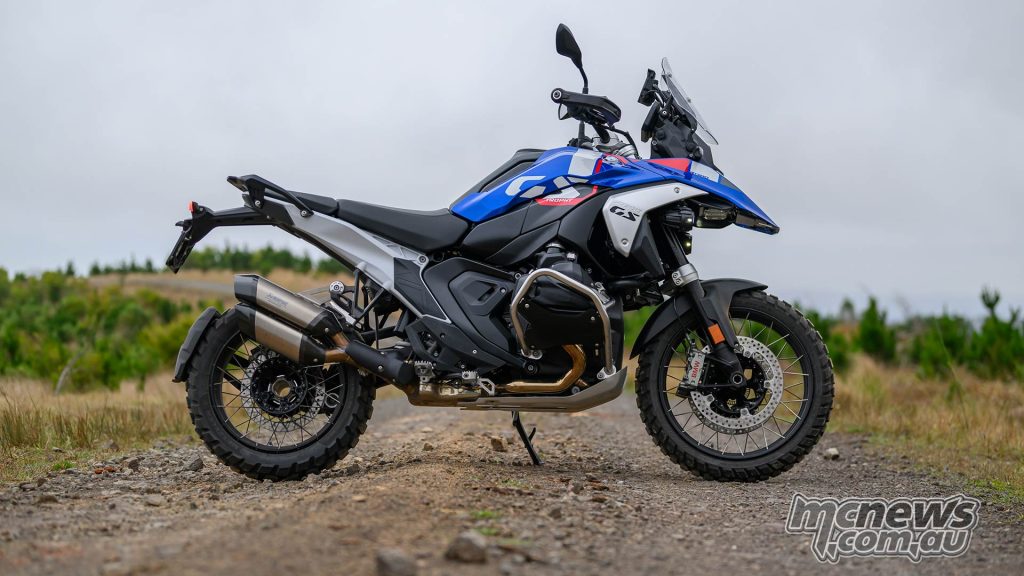
You might also be aware of the ‘Trophy X’ variant, but if not, it gets a bunch of off-road skewed goodies on top of the base model. The highlights are:
- A heated seat, sport suspension, Double-outlet Akra muffler, more off-road biased rubber
- The ‘Dynamic’ package (Quick-shifter, Pro Ride Modes, and Sports Brakes)
- ‘Trophy’ styling – High ‘comfort’ seat (weird name, it’s basically a flat rally-style seat) and black spoked wheels
- ‘Enduro Pro’ package (handlebar risers, engine and frame protection, shorty levers, wider foot-pegs, adjustable gear and rear brake lever)
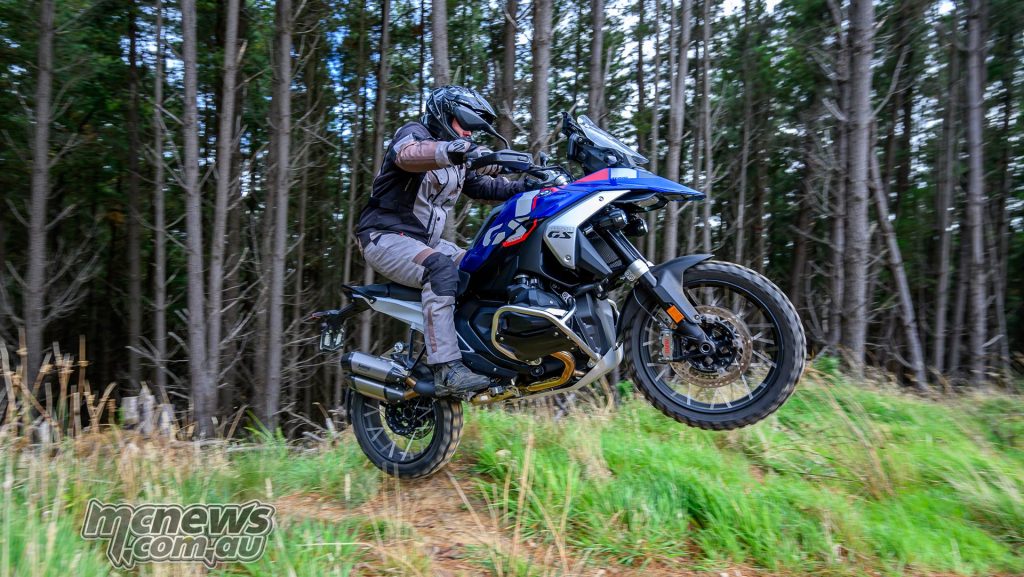
So, it’s a noticeably more off-road-focused offering compared to the base model. As such, I’ll be talking mostly about what it’s like off-road. On the road? It’s bloody excellent (except for the gearbox, but we’ll get to that). If you’ve never ridden a big GS on the road, you probably underestimate how potent they can be on tarmac.
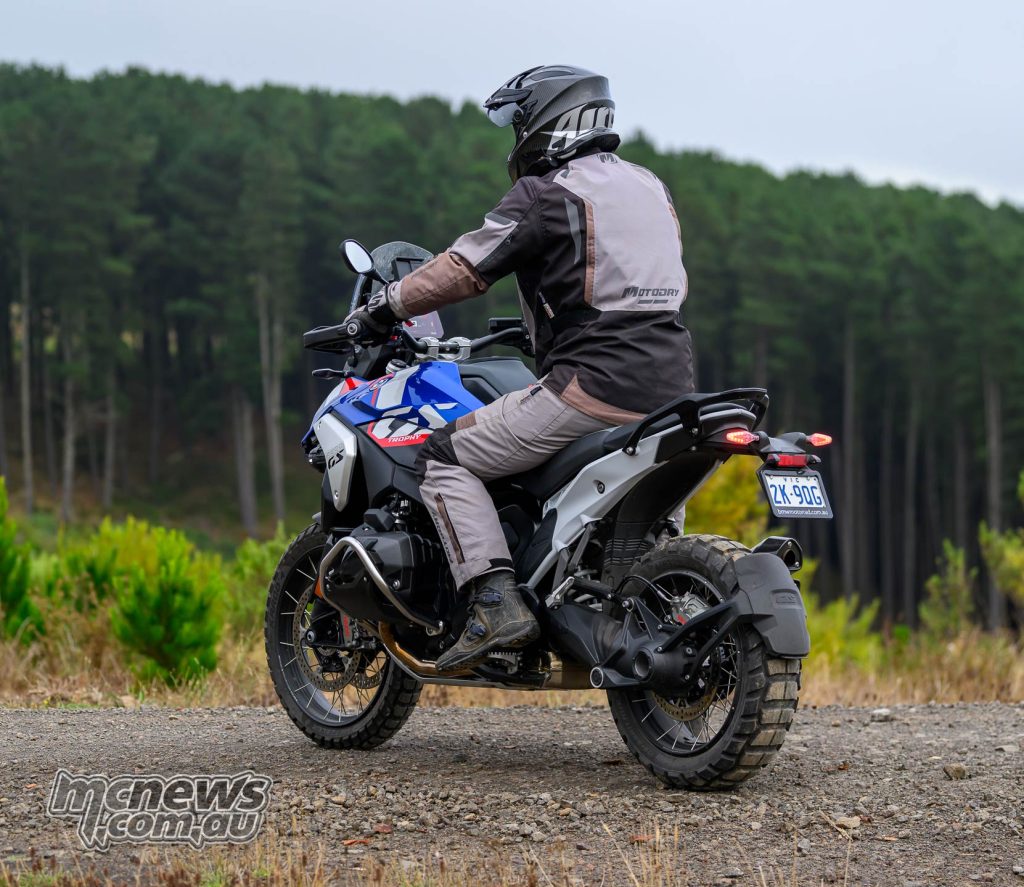
First things first. The high seat. I’m only a smidge under six feet in old money (181cm), and I found the seat bordering on too high. Think one-foot-down-on toes high for me – and that’s on even ground. The seat itself is definitely comfy enough, and the riding position with the risers is very nice, with a terrific grip area between your knees. But man, manoeuvring slowly around obstacles or turning the bike around in tight spots on uneven or very rough ground is hard work. I’d consider ordering the standard or lower seat (which you can do at no extra cost, I believe).
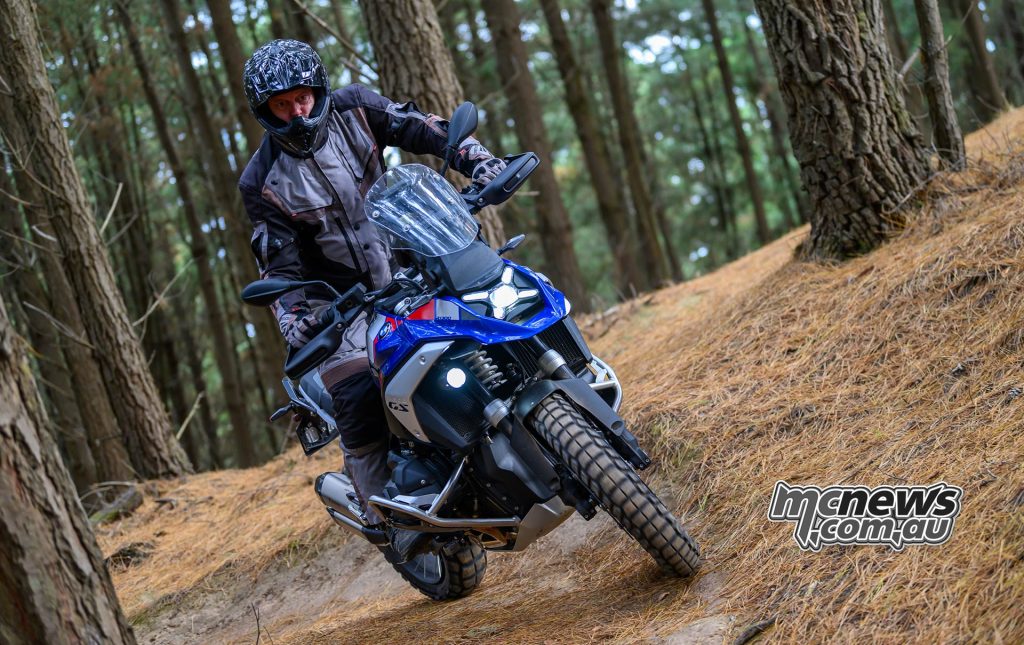
At one particular corner, photographer Rob hit me up with, “Can you just back it into here and drift around this tight hairpin?” I looked at him with a deadpan “Yeah, that’s just not going to happen” expression. At least not without getting to know this bike a whole lot better. So it does feel big and tall. This is not a bike many riders will jump straight on and get the best out of. It was almost like that extra seat-height made me feel the weight in the bike more than it did on the Pure.
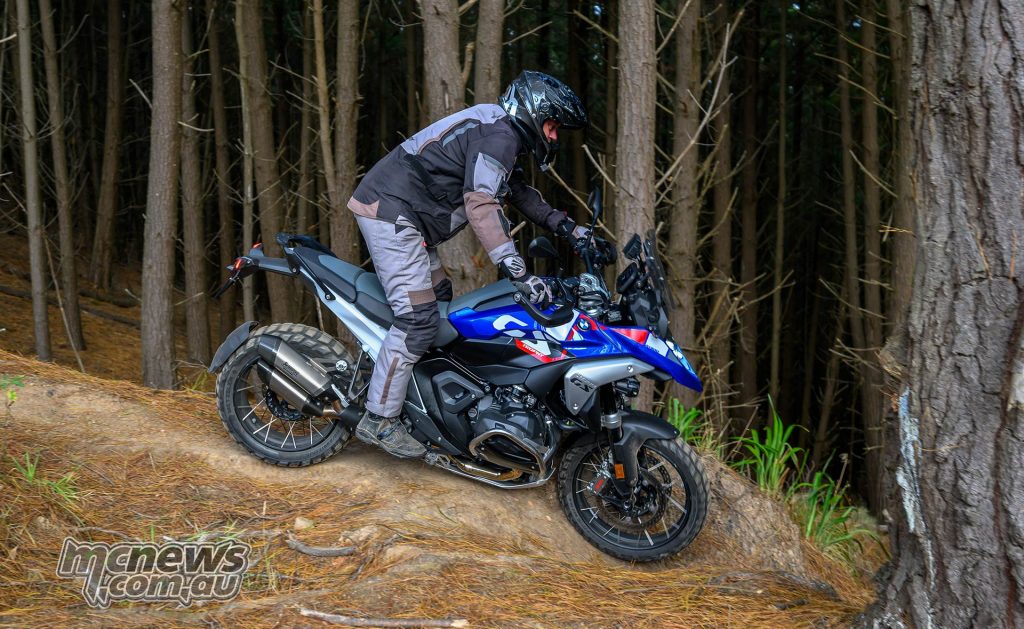
Once on the go, however, it retains the exceptional low-speed balance of the old 1250. Wonderful, wonderful balance and control. I picked my way up and down a steep, tight trail I probably had no right to be on aboard such a big bike. Low-speed confidence is there for sure. As long as you don’t have to stop… Because when you do have to, just as with the other big bikes in it’s class, there is no denying physics. They are big heavy jiggers to man-handle around.
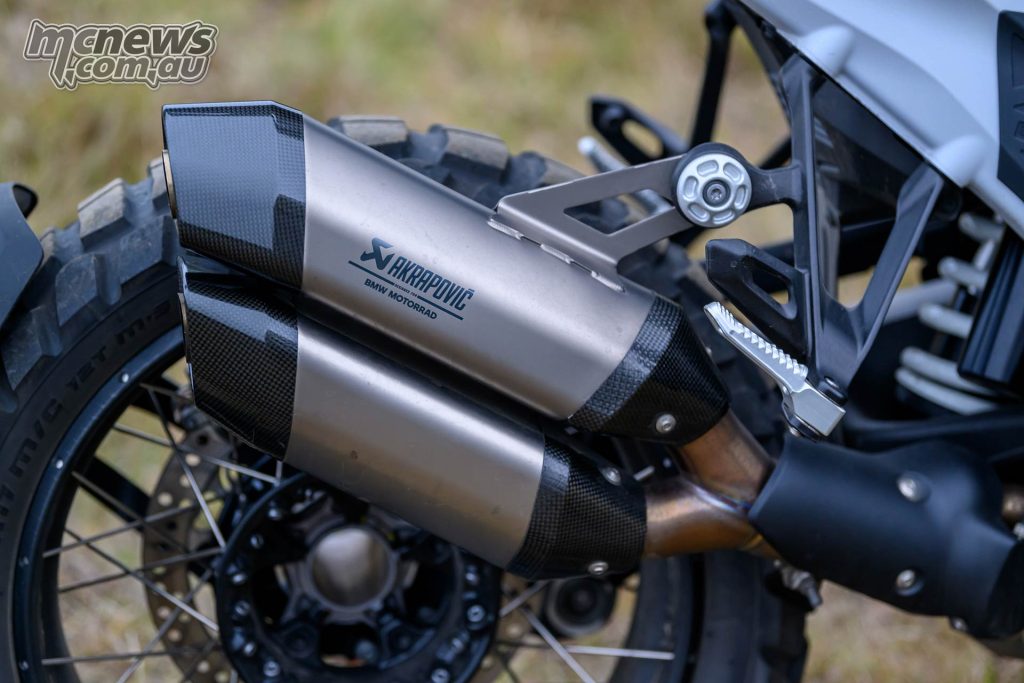
You do still have to be aware of the width of that engine, too. I’d done a pre-run of the shoot location on the long termer Tuareg with no issue, but I came awfully close to making contact with stumps and rocks a few times on the big boxer. Dropping into ruts (especially four-wheel-drive ruts) is another scenario where you need to consider those outriggers decking down. But if you’re doing mostly decent gravel soft-roading, they won’t be an issue.
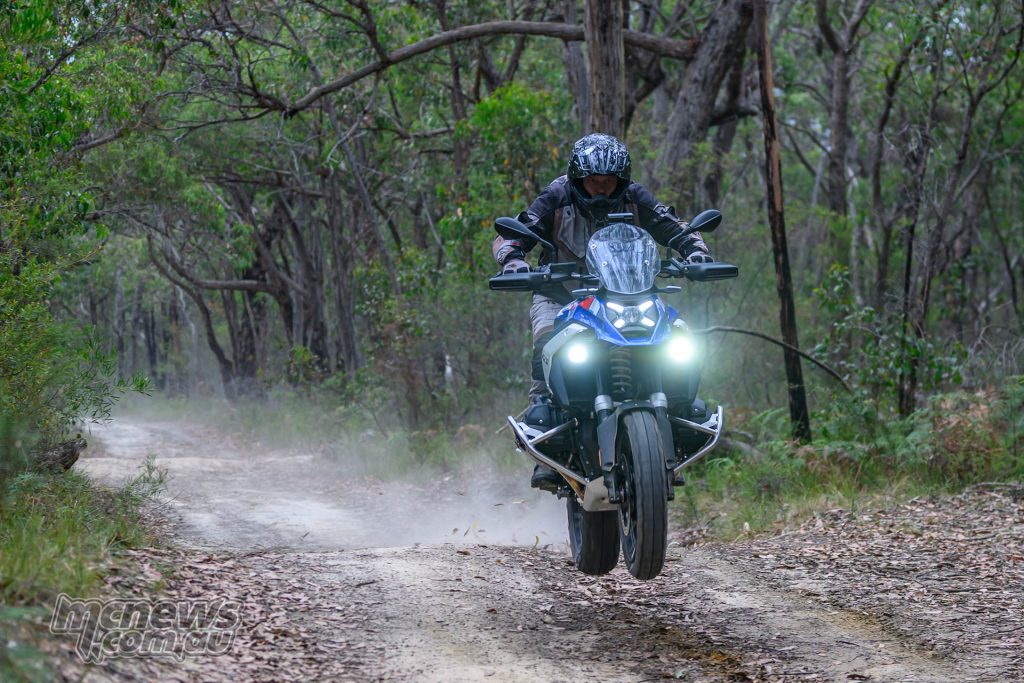
The one massive surprise for me was the sports suspension. It is extraordinary. So markedly different to the Rallye X I rode last year. I felt the old bike was too soft, especially at the top of the stroke. The sports suspension on the Trophy X, however, has me singing its praises loudly from the hilltops.
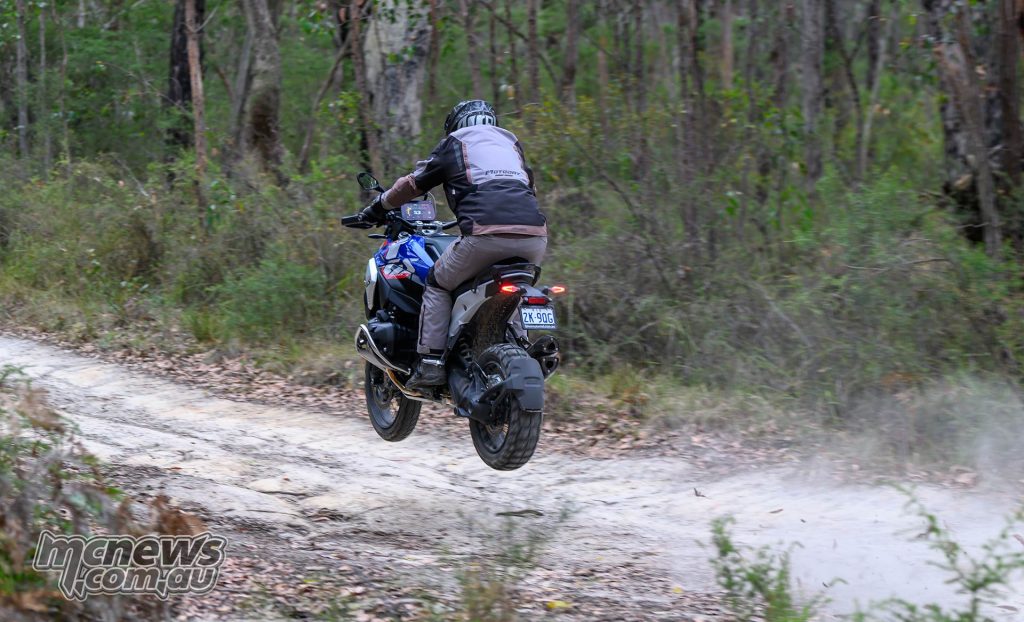
Little jumps are no problem at all on standard suspension settings. Even launching off water bars and using all of the travel didn’t result in a harsh bottom out. It’ll definitely bottom out if you launch hard enough, but it’s bloody composed when you do.
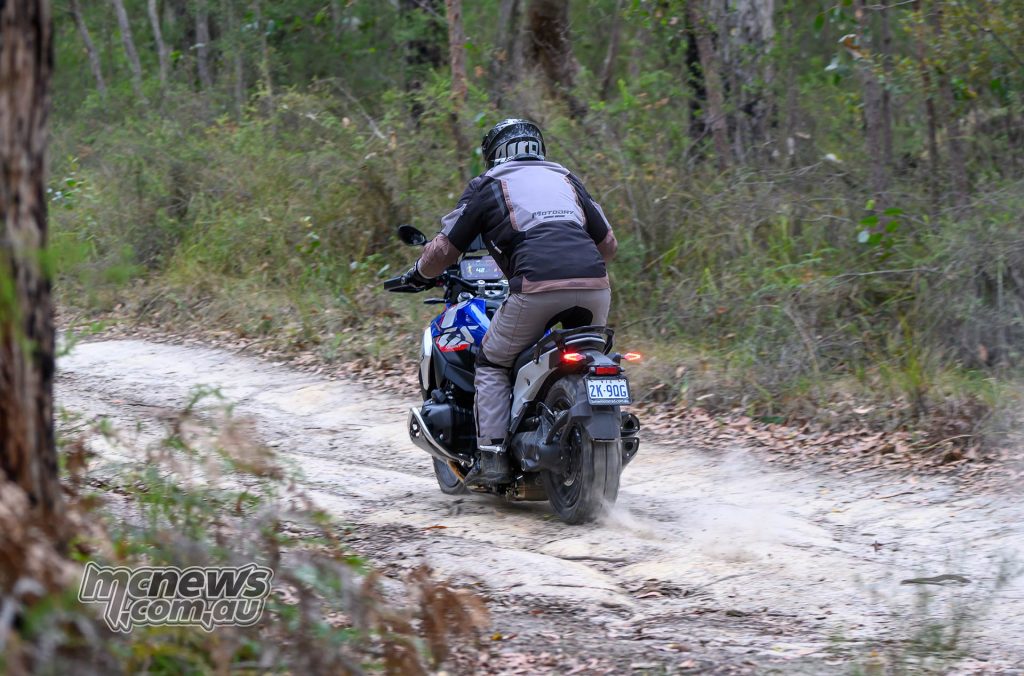
The standard settings are firm enough that I felt no need to play around too much, yet there’s plenty of adjustment left in the suspension as you get more confident and want to start wicking it up. Or load it up with luggage or a pillion, or both.
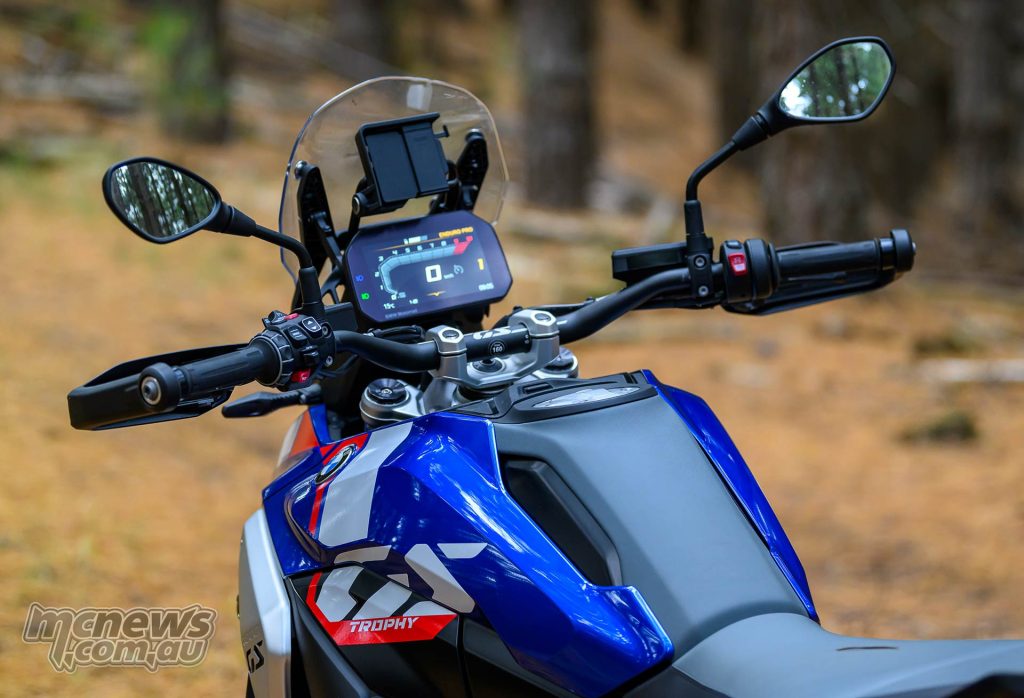
That brings me to my first gripe. Just as on the Pure, there’s a ‘hamburger’ button on the left switch-block to quickly access and toggle suspension damping, heated grips, and traction control. But that method does not allow you to do all of the fine adjustments that are available if you dive right into the bike settings menu. Which is frustrating when you just want to dial in your bike on the fly…
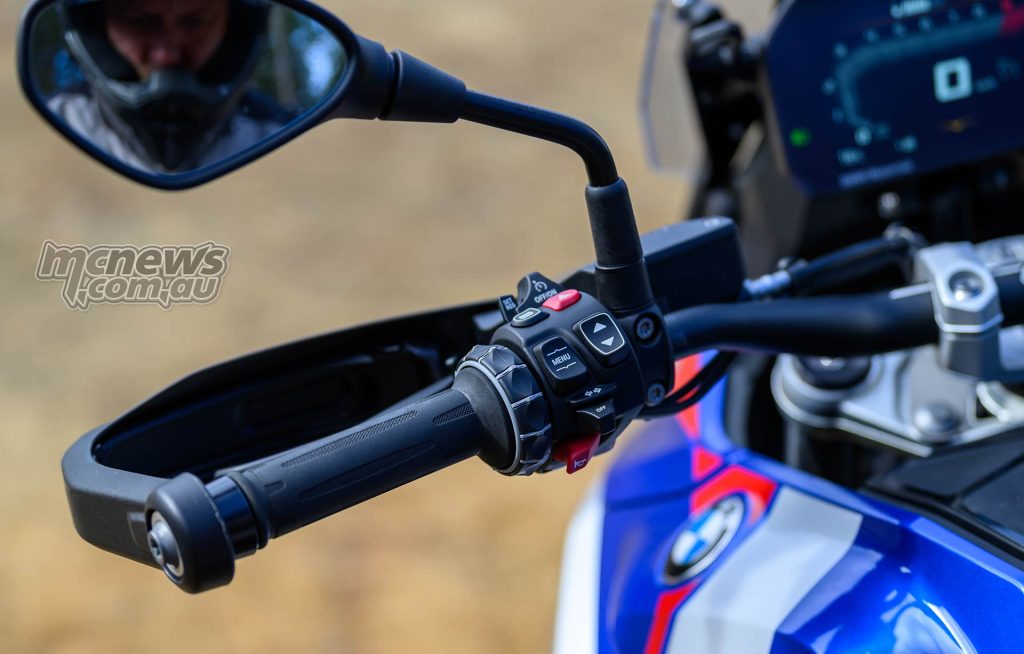
And the insistence of using the scroll wheel as the vertical input device for that menu also annoyed me. It would be easier to just tap the hamburger again quickly and jump between the options when there are only three to choose from…
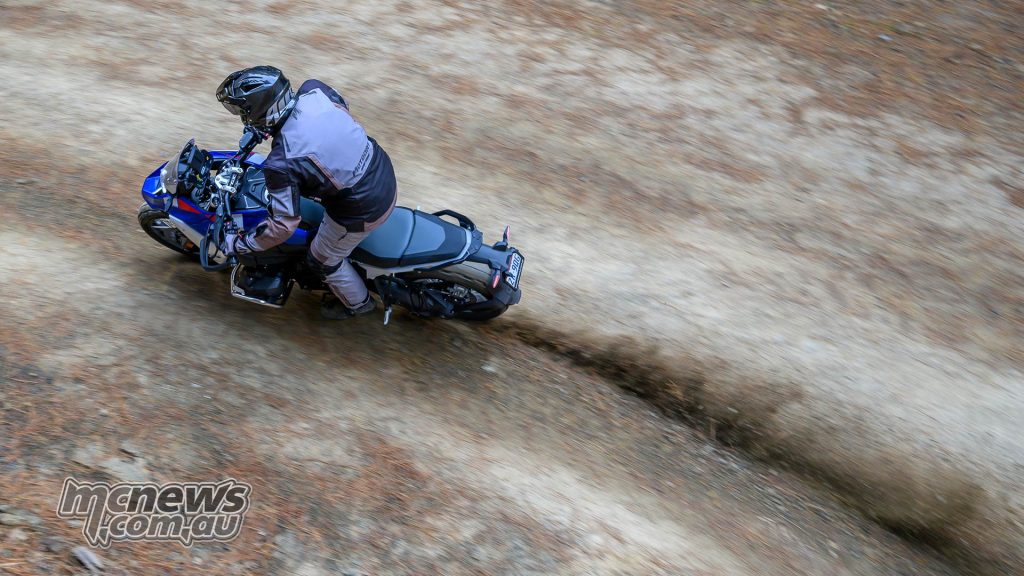
That suspension made me aware of just how much grip and potential the new chassis has, which is a lot. On fire trails and logging tracks it fairly hunkers down, grips, and goes. The level of performance is quite high overall. But as mentioned above, so are the requirements on the rider to get the best out of it.
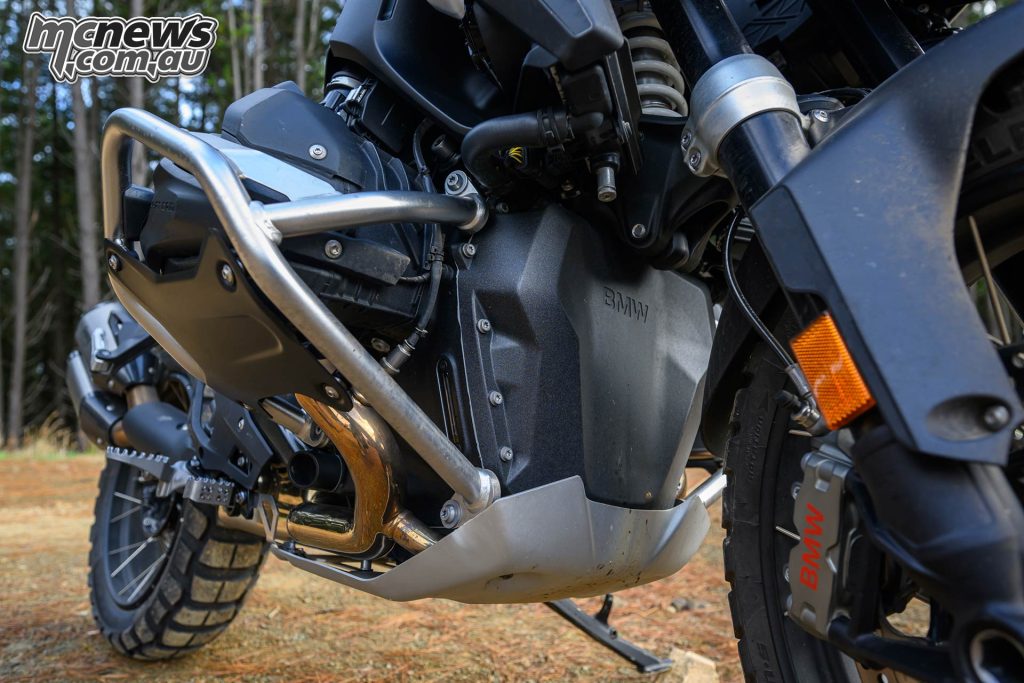
As with the Pure, that front-end is downright amazing. It’s the best telelever set-up I’ve ridden. You barely notice its lack of dive other than if you’re giving those awesome BMW-branded Brembos a workout, or trying to physically compress the front to pop the front up over something. That’s a technique you’d need to work on for anything other than grippy surfaces. I found the lack of dive I could generate would result in the rear just spinning up instead of hooking up and lofting the front. I’d need to work on that. The same goes at a standstill when trying to compress the front end to get the bike to roll back when doing a three-point turn. Won’t happen with this jigger.
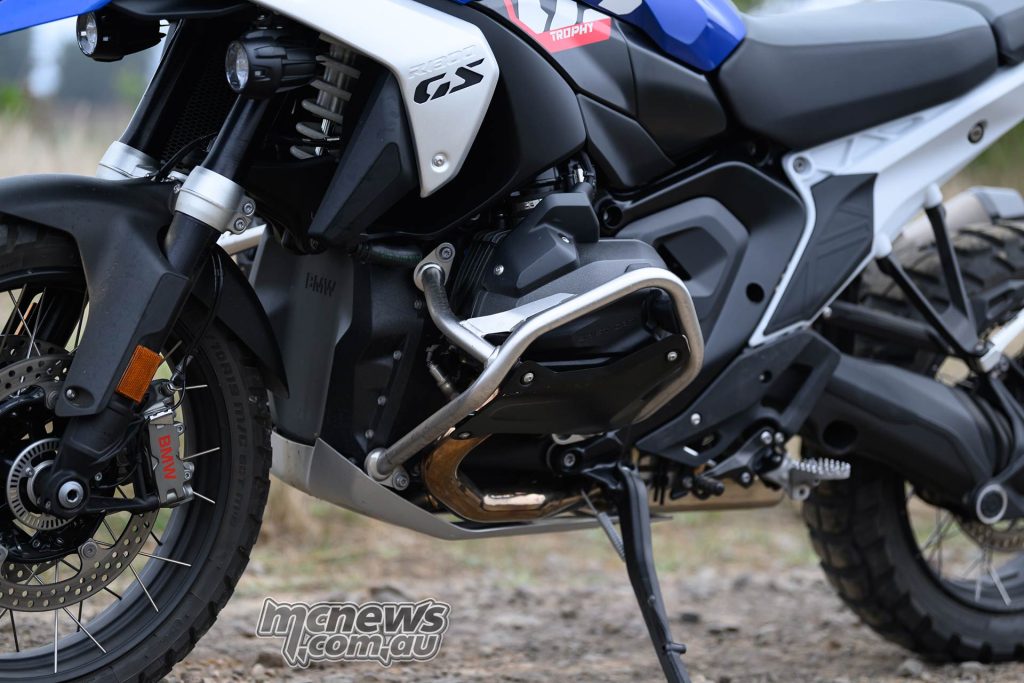
Engine wise, that Shiftcam Boxer is a Goddamn powerhouse. Ridiculously so. And when that chassis and suspension do hook up, you will be fairly belting along the countryside. It’s like a well-tuned turbo diesel engine. It chugs along at barely over idle, almost un-installable, then rips into the mid-range like a beast. Sounds like a diesel at idle though too.. like an old Hilux rattling away. Once the revs are up past three thousand, it smooths out and sounds ok, but down low? The less said, the better.
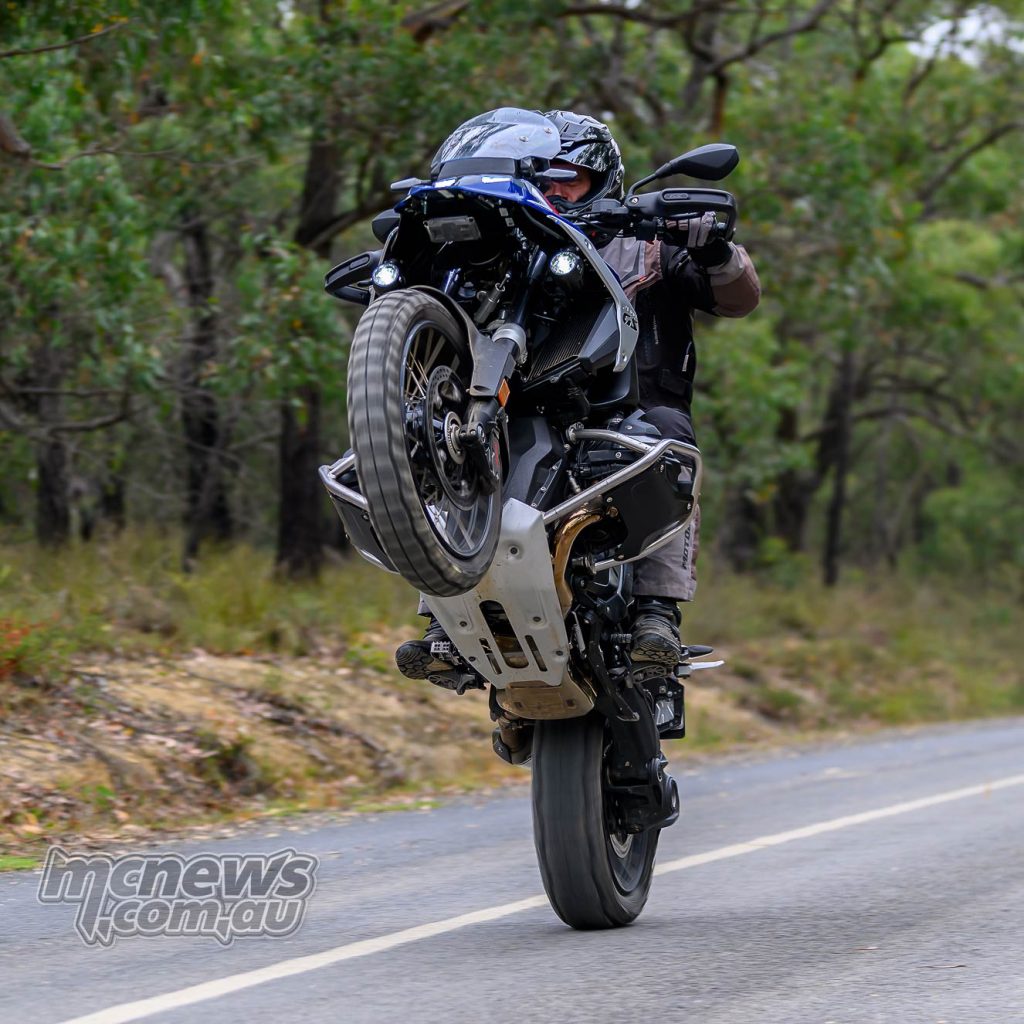
It’s got serious, serious grunt. Masses of it. On the road, you can put that grunt to the ground. Off-road? I’m questioning things here. Have we reached the point where it becomes too much bike for most people? Is anyone other than a very small handful of riders going to get close to extracting the performance here? And if that potential isn’t easily extractable – are you going to want to push a near 40-grand bike hard off-road? These bikes are now at risk of moving towards what modern-day Superbikes are, less and less relevant for the masses if you want to explore their outright level of performance.
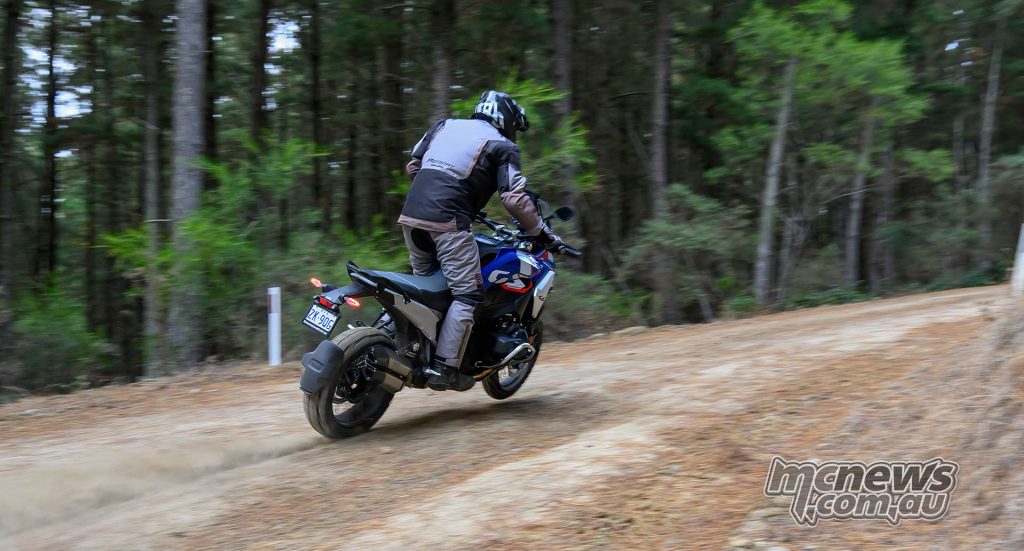
Let me put it this way – while the Multistrada V4 has comfortably more power than the new GS, I found the big V4 easier to punt along hard than the GS. I might be in the minority here, but I found the relatively softer bottom-end of the Duc easier to tame.
I didn’t find a TC setup that allowed for big slides. For me, it needed to be in-between the lowest intervention and off. Even the lowest setting chimed in and held back slides more than I wanted. Maybe some more options in there would help things.
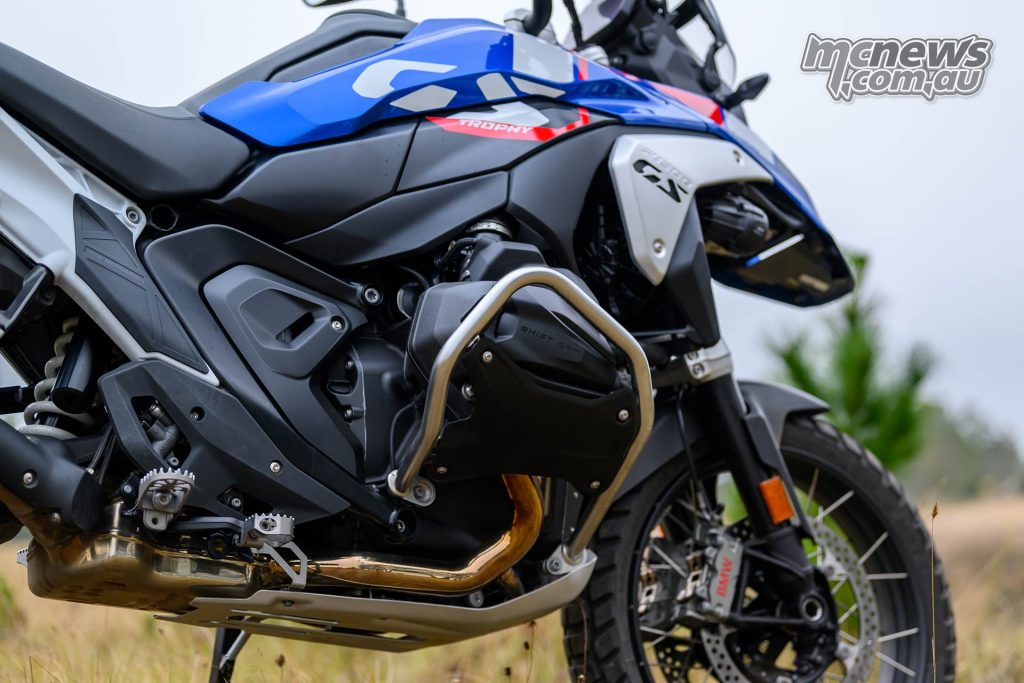
Thank goodness, the gearbox in this particular bike didn’t have quite the issues I had on the Pure, but there are still issues there. The lower three gears are fairly clunky, but it’s the quick-shift ‘tune’ that really needs work. I found there is a sweet spot somewhere between 30 and 50 per cent throttle where it shifted nicely in those lower three. Anything outside that, and it was, not nice.
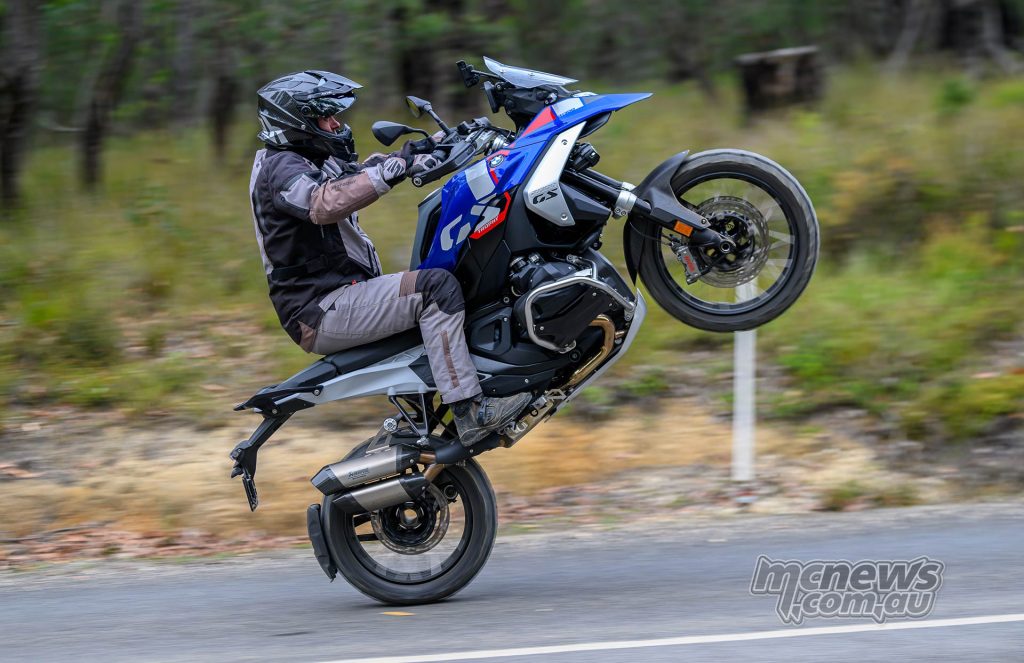
Constant or part-throttle shifts were quite jerky. Near-flat shifts would sometimes not go in at all. The engine would have the ignition pause, but the shift wouldn’t take place. I’m hopeful that BMW will fix this via an electronic update. The clunkiness probably won’t go away, but the shift jerkiness should be able to be programmed out.
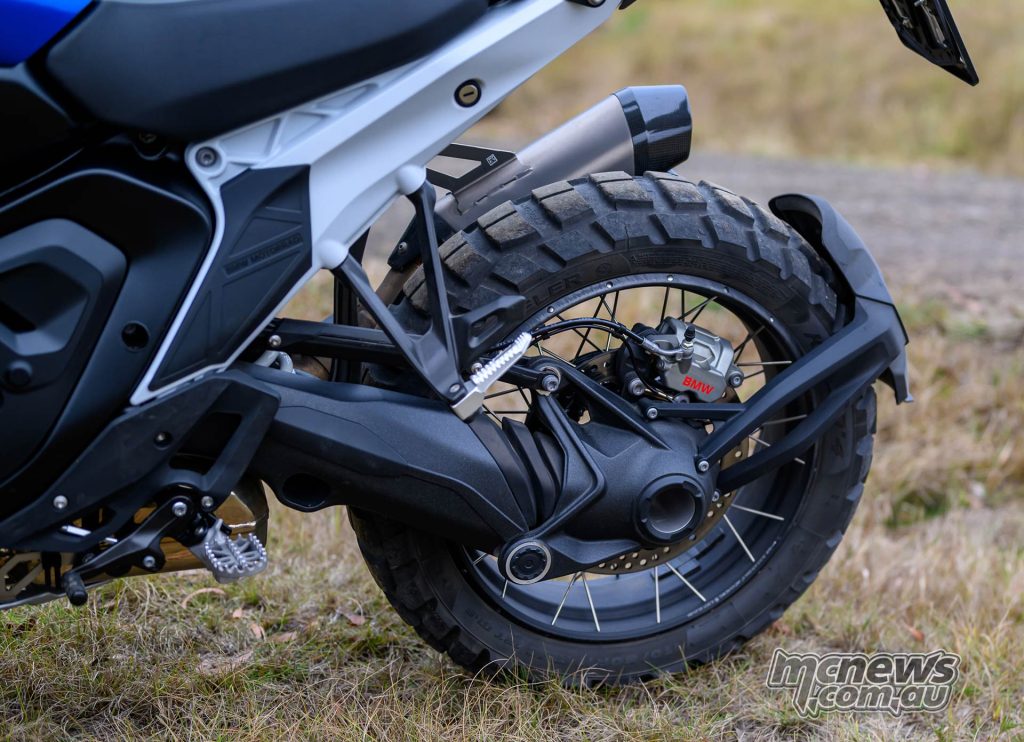
I normally find a sweet spot pretty quickly and will be the first person to say ‘ride to the bike’. But in this case I had to substantially change the way I rode in slow traffic to smooth out gear-changes, and it was still distracting. The rider shouldn’t have to think about that stuff when they’re dodging cars.
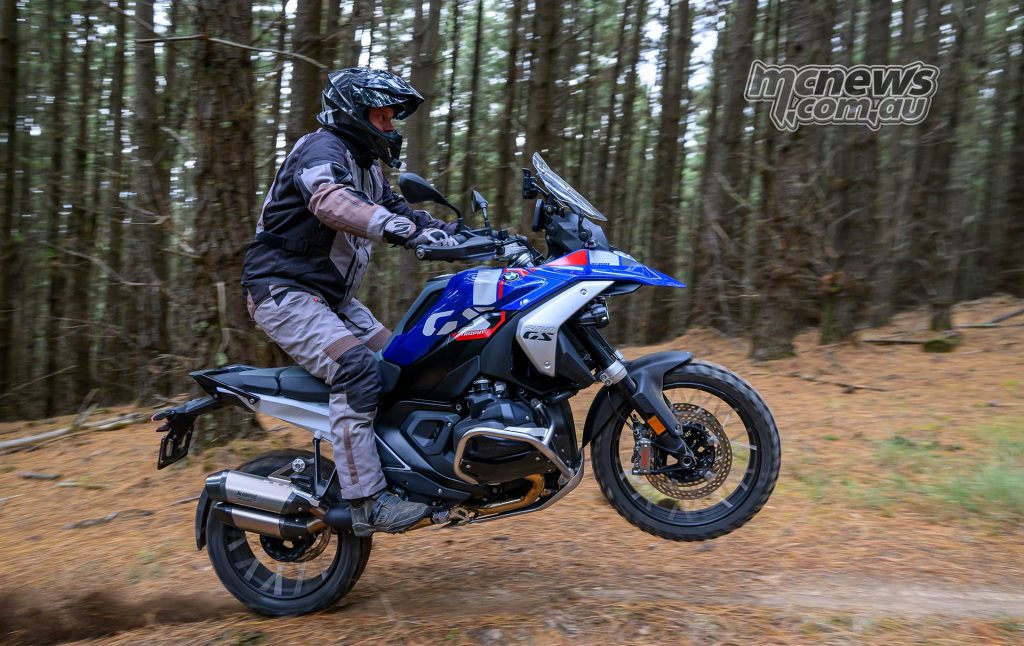
Other thoughts? I am still wondering if pillions are as well-catered for in the 1300 compared to older models. I had Rob as a pillion for a short while (admittedly down a fire trail), and he wasn’t glowing in his report, but I haven’t tested that back to back, as I try to avoid pillions at all cost!
Speaking of cost, it’ll set you back close enough to 36 grand before ticking any additional boxes. That’s partly why I’m fairly picky about those annoyances, but also because I know the standard BMW customer will be, too.
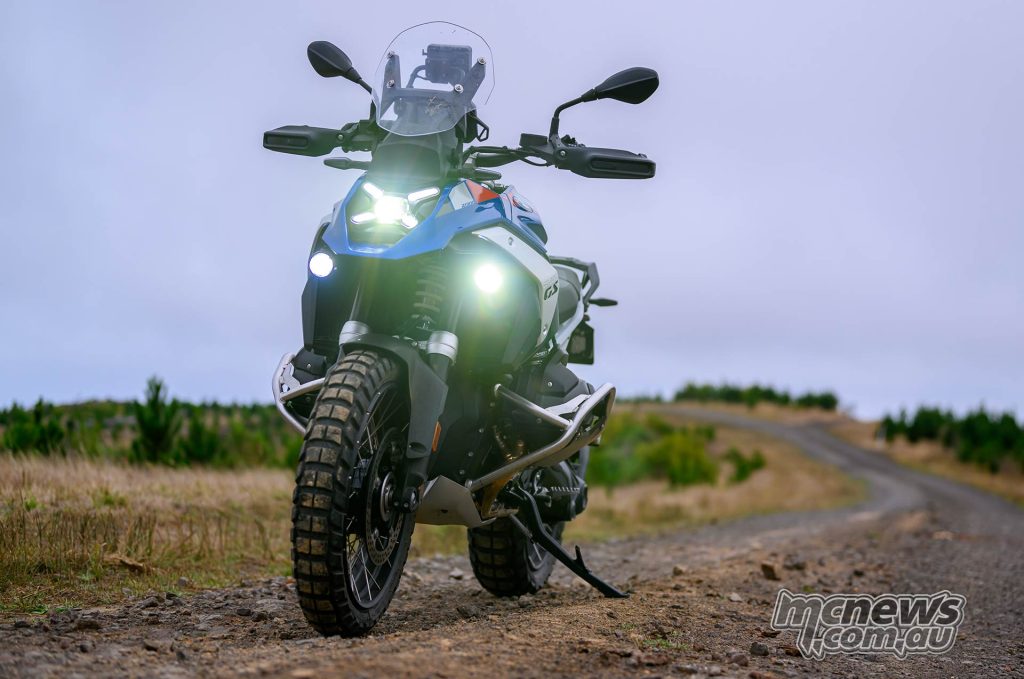
So, BMW still has some work to do before the new 1300 realises the potential of the redesign. This is mostly with the quick-shift and TC electronics and controls. I assume a TC tune will reduce the clunkiness in lower cogs as well.
The more I rode it, the more confidence I had in it and the better it felt. On a flowing track its once again absolutely up there with the best in this category. Certainly vying for the ‘best all-rounder’ gong. And once those niggles are dealt with…. What an out-and-out weapon. All other manufacturers are on notice.
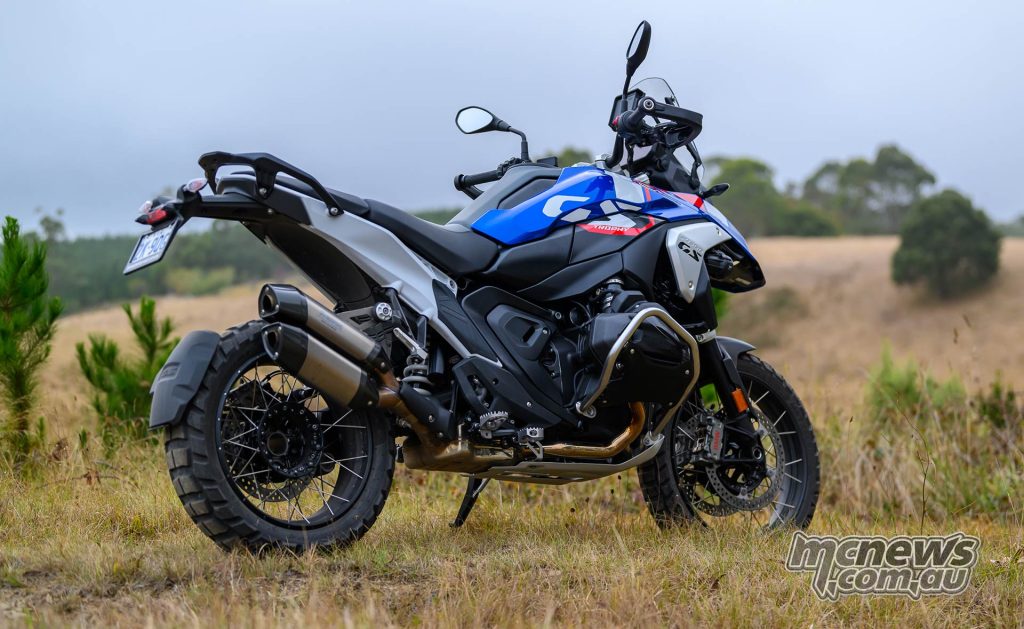
I like the BMW R 1300 GS Trophy X because:
- Any time an Adventure bike can shed weight, it’s a good thing. 12 kilos deserves shouting about.
- Suspension capability seems like a massive leap forward. Very impressive.
- That engine has more hump than Magic Mike at a swingers convention.
- Though it’s always subjective, I rate the new styling, big time. It’s a much better-looking thing than the outgoing model.
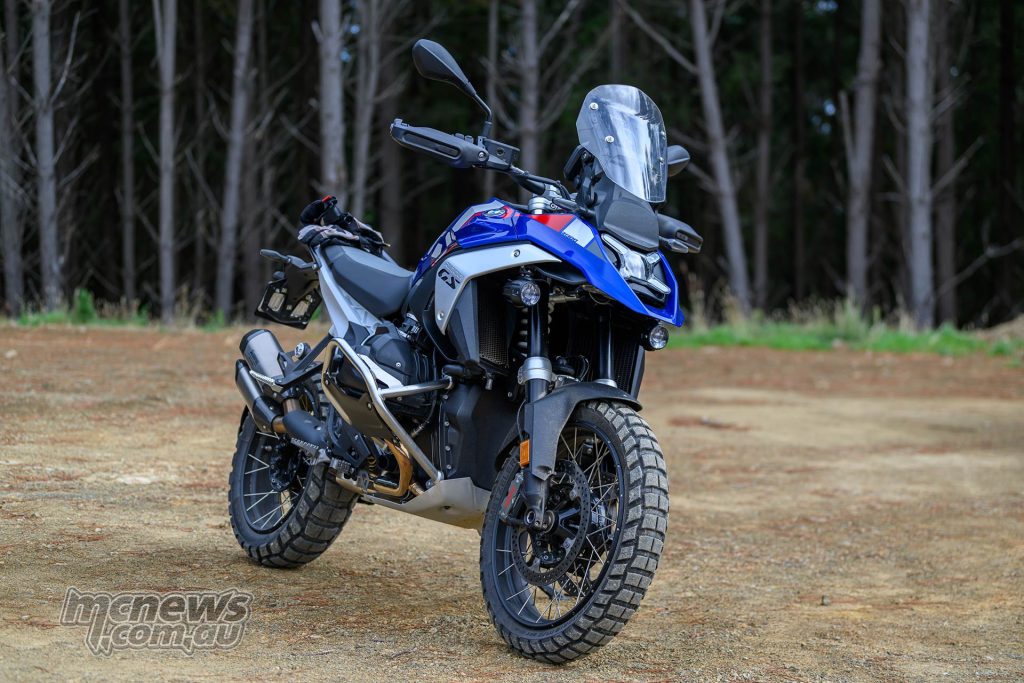
I’d like the BMW R 1300 GS Trophy X more if:
- The gearbox needs work. Clunky in the lower three gears and the quickshift tune is jerky outside of a specific window of throttle opening.
- Traction control settings need some tweaking I think, at least for the tyres that come as standard.
- And the hamburger menu should give you access to the full breadth of settings for TC and suspension damping.
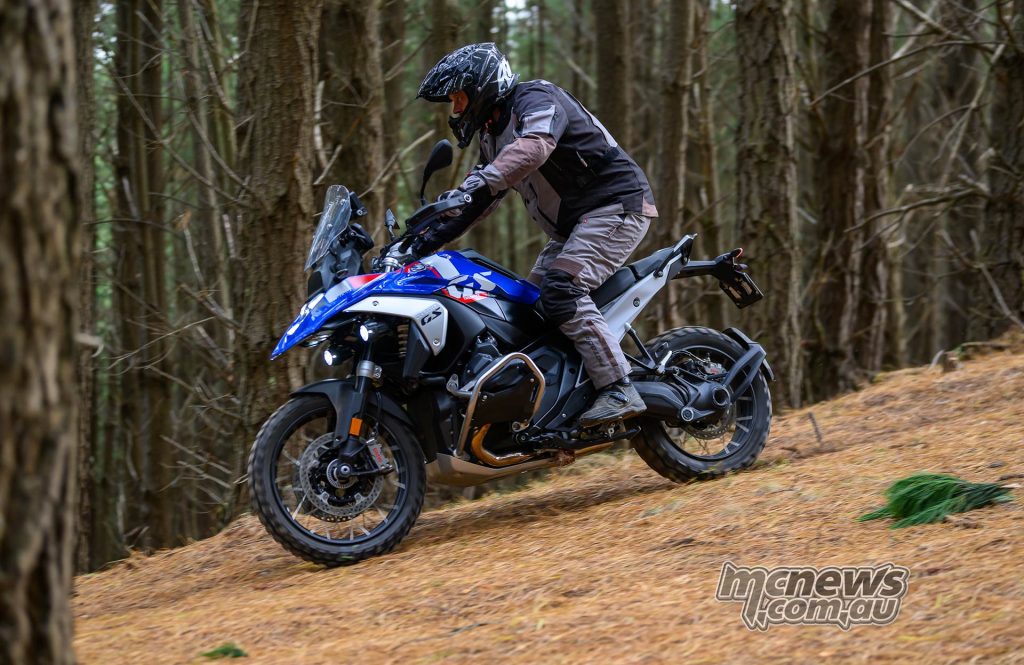
| BMW R 1300 GS Trophy X Specifications | |
| Engine | 1,300 cc Air/liquid-cooled four-stroke flat twin engine with double overhead and chain driven camshafts (BMW ShiftCam) and balance gear wheels |
| Compression Ratio | 13.3 : 1 |
| Power | 107 kW (145 hp) at 7,750 rpm |
| Torque | 149 Nm at 6,500 rpm |
| Emission control | Closed-loop 3-way catalytic converter |
| Bore x stroke | 106.5 mm x 73 mm |
| Compression ratio | 13.3:1 |
| Mixture control | Electronic intake pipe injection |
| Exhaust emission standards | EU 5 |
| Maximum speed | over 200 km/h |
| Fuel consumption per 100 km based on WMTC | 4.8 l |
| CO2 emission based on WMTC | 110 g/km |
| Fuel type | Super unleaded, 95 ROZ/RON; adaptive fuel quality regulation, 91-98 ROZ/RON |
| Alternator | Three-phase alternator with 650 W (nominal power) |
| Battery | 12 V / 10 Ah, maintenance-free Lithium-ion battery |
| Clutch | Wet clutch, anti-hopping clutch, hydraulically operated |
| Gearbox | Claw-shifted 6-speed gearbox |
| Drive | Cardan |
| Traction control | BMW Motorrad DTC |
| Frame | Two-part frame concept consisting of main frame and rear frame bolted to it, co-supporting engine |
| Front-wheel location/suspension | BMW Motorrad EVO-Telelever, handlebar tilting decoupled via flex element, central shock absorber |
| Rear wheel location/suspension | BMW Motorrad EVO-Paralever, cast aluminium single-sided swingarm, transversal connected swing arm bearings, central WAD spring strut, spring preload fully adjustable |
| Suspension travel, front / rear | 210 mm / 220 mm (with Sports Suspension) |
| Wheelbase | 1,518 mm |
| Castor | 112 mm |
| Steering head angle | 63.8 ° |
| Wheels | Aluminium cast wheels |
| Rim, front | 3.00 x 19“ |
| Rim, rear | 4.50 x 17“ |
| Tyre, front | 120/70 R19 |
| Tyre, rear | 170/60 R17 |
| Brake, front | Twin disc brake, semi-floating brake discs, diameter 310 mm, 4-piston radial brake caliper |
| Brake, rear | Single disc brake, diameter 285 mm, 2-piston floating caliper |
| ABS | BMW Motorrad Full Integral ABS Pro (lean angle optimized) |
| Seat height at unladen weight | 890 mm (with Sports Suspension) |
| Inner leg curve at unladen weight | 1,900 mm |
| Usable tank volume | 19 l |
| Reserve | approx. 4 l |
| Length | 2,212 mm (over splash guard) |
| Height | 1,406 mm (above windshield) |
| Width | 1,000 mm (over hand guard) |
| Unladen weight, road ready, fully fuelled | 237 kg |
| Permitted total weight | 465 kg |
| Payload (with standard equipment) | 228 kg |
